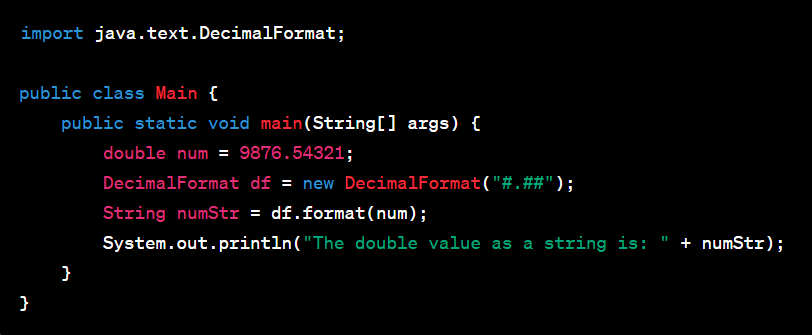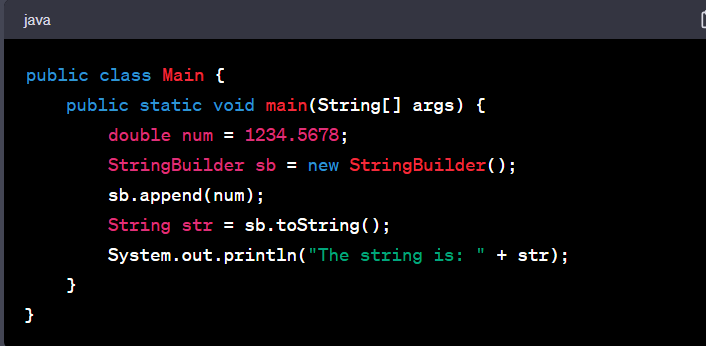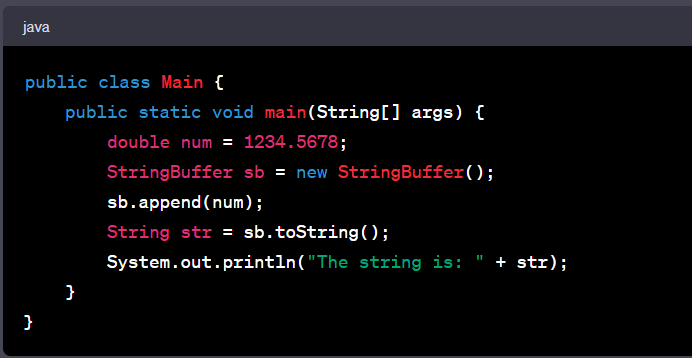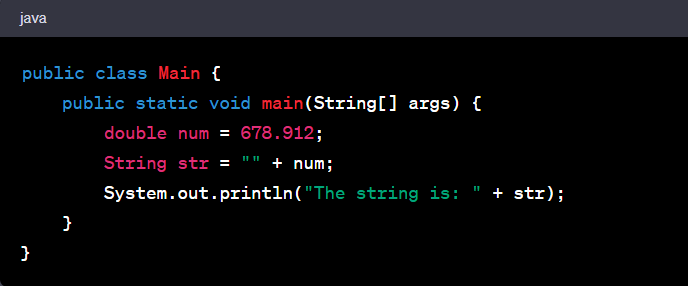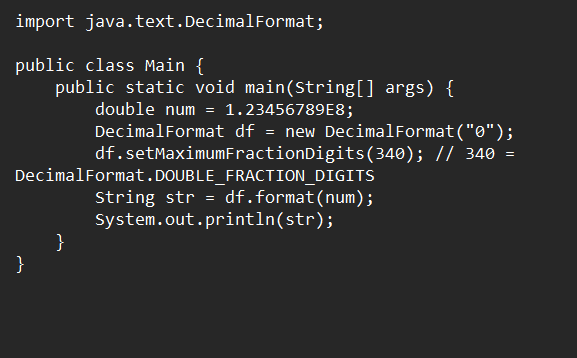For working professionals
For fresh graduates
- Study abroad
More
- Executive Doctor of Business Administration from SSBM
- Doctorate in Business Administration by Edgewood College
- Doctorate of Business Administration (DBA) from ESGCI, Paris
- Doctor of Business Administration From Golden Gate University
- Doctor of Business Administration from Rushford Business School, Switzerland
- Post Graduate Certificate in Data Science & AI (Executive)
- Gen AI Foundations Certificate Program from Microsoft
- Gen AI Mastery Certificate for Data Analysis
- Gen AI Mastery Certificate for Software Development
- Gen AI Mastery Certificate for Managerial Excellence
- Gen AI Mastery Certificate for Content Creation
- Post Graduate Certificate in Product Management from Duke CE
- Human Resource Analytics Course from IIM-K
- Directorship & Board Advisory Certification
- Gen AI Foundations Certificate Program from Microsoft
- CSM® Certification Training
- CSPO® Certification Training
- PMP® Certification Training
- SAFe® 6.0 Product Owner Product Manager (POPM) Certification
- Post Graduate Certificate in Product Management from Duke CE
- Professional Certificate Program in Cloud Computing and DevOps
- Python Programming Course
- Executive Post Graduate Programme in Software Dev. - Full Stack
- AWS Solutions Architect Training
- AWS Cloud Practitioner Essentials
- AWS Technical Essentials
- The U & AI GenAI Certificate Program from Microsoft
6. JDK in Java
7. C++ Vs Java
16. Java If-else
18. Loops in Java
20. For Loop in Java
46. Packages in Java
53. Java Collection
56. Generics In Java
57. Java Interfaces
60. Streams in Java
63. Thread in Java
67. Deadlock in Java
74. Applet in Java
75. Java Swing
76. Java Frameworks
78. JUnit Testing
81. Jar file in Java
82. Java Clean Code
86. Java 8 features
87. String in Java
93. HashMap in Java
98. Enum in Java
101. Hashcode in Java
105. Linked List in Java
109. Array Length in Java
111. Split in java
112. Map In Java
115. HashSet in Java
118. DateFormat in Java
121. Java List Size
122. Java APIs
128. Identifiers in Java
130. Set in Java
132. Try Catch in Java
133. Bubble Sort in Java
135. Queue in Java
142. Jagged Array in Java
144. Java String Format
145. Replace in Java
146. charAt() in Java
147. CompareTo in Java
151. parseInt in Java
153. Abstraction in Java
154. String Input in Java
156. instanceof in Java
157. Math Floor in Java
158. Selection Sort Java
159. int to char in Java
164. Deque in Java
172. Trim in Java
173. RxJava
174. Recursion in Java
175. HashSet Java
177. Square Root in Java
190. Javafx
Convert Double To String In Java
Introduction
In programming, we often encounter situations where data conversion between different types becomes necessary. Among these, a commonly seen scenario is to convert a double to a string in Java. But why would you need to do this? Perhaps you want to concatenate numeric data with text, format the data for output, or store numeric values as text in a file or database. In such cases, understanding how to convert a double into a string becomes vital.
Java, being a versatile language, offers many ways to perform this conversion. Whether you use the built-in toString() method, the String.format() method, or the DecimalFormat class, Java provides a variety of tools to handle this task smoothly. In this guide, we will explore these different methods in detail, explaining the benefits and best use cases for each, to help you master the process of converting a double to a string in Java. Not only will you learn how to carry out these conversions, but you'll also gain insight into how and why they work, further deepening your understanding of Java programming. Welcome to the journey!
Overview
In this guide, we'll delve into the numerous techniques to convert a double to a string in Java, focusing on several scenarios that commonly arise in programming.
- Java Double to String with 2 Decimals: We often want our double values to be rounded and represented as a string with exactly two decimal places, especially in financial calculations. We'll look into how to accomplish this, achieving precise and readable string representations.
- Convert Double to String in Java without Exponential: Doubles can have large or small values, and Java may represent them in exponential form when converted to a string. We'll explore how to prevent this and get a non-exponential string representation.
- Java Double to String without Decimal: Sometimes, we need to convert a double into a string but without any decimal places. We'll also discuss how to truncate the decimal part and only keep the integer part in the string representation.
- Convert Double to Int in Java: Lastly, we'll also touch upon how to convert a double value to an integer. This involves truncating the decimal part completely and changing the type from double to int.
By understanding these scenarios, you'll be well-equipped to handle various double-to-string conversion requirements in your Java projects.
String.valueOf()
String.valueOf() is a static method in Java that converts different types of values into a string. When you pass a double value to this method, it returns a string representation of the double.
Double.toString()
Similar to String.valueOf(), Double.toString() is another method that converts a double value to a String in Java. This method is part of the Double class, and it can be used to convert a double primitive or a Double object to a string.
Converting from Double to String Using valueOf() Method in Java
The valueOf() method is part of the String class in Java. It's a static method that takes various types of arguments, including double and returns their string representation.
Here's an example of how to use String.valueOf() to convert a double to a String in Java:
In the above example, we declare a double variable num and assign it a value of 9876.54321. Next, we use String.valueOf(num) to convert this double to a string, storing the result in the numStr variable. When we print numStr, we can see the double value represented as a string.
Output
This output shows that the double value 9876.54321 has been successfully converted to a string using the String.valueOf() method.
Java Program to Convert Double to String Using DecimalFormat.format()
In Java, the DecimalFormat class is part of the java.text package. It's used for formatting numbers so that they can be easily read. We can use the format() method from DecimalFormat to convert a double to a String and have control over the formatting.
Here's an example:
In the above example, we declare a double variable num and assign it a value of 9876.54321. We create an instance of DecimalFormat named df and pass in the pattern string "#.##". This pattern will format the number up to two decimal places.
Next, we use df.format(num) to convert this double to a string, storing the result in the numStr variable. When we print numStr, we can see the double value represented as a string, formatted to two decimal places.
Output
This output shows that the double value 9876.54321 has been successfully converted to a string using the DecimalFormat.format() method and formatted to two decimal places.
Java Program to Convert Double to String Using StringBuffer and StringBuilder
The StringBuffer and StringBuilder classes in Java can be used to perform complex string manipulations. They can also be used to convert a double to a string, with the help of their append() methods, which are capable of accepting double values.
Here's an example with StringBuilder:
And here's an example with StringBuffer:
In both cases, we start by creating an instance of StringBuilder or StringBuffer. Then we append the double num to this instance using the append() method. After appending, we convert the StringBuilder or StringBuffer to a string using the toString() method.
The output of both programs will be:
Java Program to Convert double to string using toString()
The toString() method is commonly used to convert a double to a String in Java. While we have Double.toString(double d) as a static method, Double objects also have their own toString() method.
Here's an example of converting a Double-object to a String:
In this code, we first create a Double object num with a value of 456.789. Then we call num.toString() to convert it into a string. The resulting string is printed to the console.
Output
This output shows that the Double object 456.789 has been successfully converted to a string using the toString() method.
Java Program To Convert Double to String Using + Operator
In Java, the + operator is overloaded to provide concatenation for String types. When used with a String and a double, the + operator converts the double to a String. This is a quick and easy way to convert a double to a String.
Here's an example:
In this code, we have a double variable num with the value 678.912. To convert num to a String, we use the + operator with an empty String (""). The double is automatically converted to a String before the concatenation operation.
Output
This output shows that the double value 678.912 has been successfully converted to a String using the + operator.
Program to Convert Double to String Using Format() Method in Java
The format() method in Java's String class is another way to convert a double to a string. This method returns a formatted string using the specified format string and arguments.
Here's an example:
In this code, we first declare a double value of 123.45678. We then call String.format() with the format specifier %.2f, which means we want to format a float or double with 2 digits after the decimal point. The double num is passed as the argument for this format specifier. The String.format() method returns the formatted string, which is then printed to the console.
Output
This output shows that the double value 123.45678 has been successfully converted to a String and rounded to two decimal places using the String.format() method.
Convert Double to String in Java Without Exponential
In Java, if a double value is very large or very small, it can be converted to a string in scientific notation (exponential form). If you want to convert a double to a string without the exponential form, you can use the DecimalFormat.
In the above code, we are creating an instance of DecimalFormat and setting the maximum number of fraction digits to 340, which is the maximum precision for double values. Then we are formatting the double number using df.format(num). This prevents the double from being formatted in exponential form.
Output
This output shows that the double value 1.23456789E8 (which is equal to 123456789) has been converted to a String without using exponential notation.
Java Double To String Without Decimal
To convert a double to a string without decimal values in Java, you can utilize the DecimalFormat class to control the formatting. Here's a brief example:
In this code, we're formatting a double number to an integer (thus, without any decimal points). The pattern string # means that the number will be formatted with no fractional part. Thus, running this code will produce the string 123, showing the conversion of a double to a String without the decimal part.
Output
This output shows that the double value 123.456 has been converted to a String without any decimal points.
Convert Double to Int Java
In Java, you can convert a double to an int simply by using casting. Note that casting to an int from a double will truncate the decimal part, it will not round the number.
For example:
In this code, we're casting the double num to an int by using the (int) cast operator. When you run this code, it will print the integer 123, showing the conversion of a double to an int in Java.
Output
This output shows that the double value 123.456 has been successfully converted to an int, truncating the decimal part and leaving the value 123.
Conclusion
Java provides multiple ways to convert a double to a string, each method serving different needs. The String.valueOf(), Double.toString(), DecimalFormat.format(), and StringBuilder or StringBuffer.append() methods all provide simple, direct conversions. The String.format() method and the + operator can be used for more flexible conversions. These methods cover various needs, from avoiding exponential notation to removing decimal points. Understanding how and when to use each method is vital for effective Java programming.
FAQs
1. What happens when a double is converted to a string using the Double.toString() method and the double is Double.NaN or Double.POSITIVE_INFINITY?
If the double value is Double.NaN, the resulting string will be "NaN". If the double value is Double.POSITIVE_INFINITY, the resulting string will be "Infinity".
2. How can I control the number of decimal places when converting a double to a string in Java?
You can use the String.format() method or DecimalFormat.format() method to control the number of decimal places.
3. What's the difference between using String.valueOf() and Double.toString() when converting a double to a string in Java?
Both String.valueOf() and Double.toString() methods can convert a double to a string in Java, and they produce the same result. The main difference lies in the method they belong to. The former is a method of the String class, and the latter is a method of the Double class.
4. How does Java handle the conversion of a negative double to an int?
When a negative double is cast to an int in Java, the value is truncated, not rounded. This means it simply discards the decimal part. For example, if you cast -123.456 to an int, you'll get -123.
-9cd0a42cab014b9e8d6d4c4ba3f27ab1.webp&w=3840&q=75)
Take the Free Quiz on Java
Answer quick questions and assess your Java knowledge


Author|900 articles published


upGrad Learner Support
Talk to our experts. We are available 7 days a week, 9 AM to 12 AM (midnight)
Indian Nationals
1800 210 2020
Foreign Nationals
+918068792934
Disclaimer
1.The above statistics depend on various factors and individual results may vary. Past performance is no guarantee of future results.
2.The student assumes full responsibility for all expenses associated with visas, travel, & related costs. upGrad does not provide any a.



